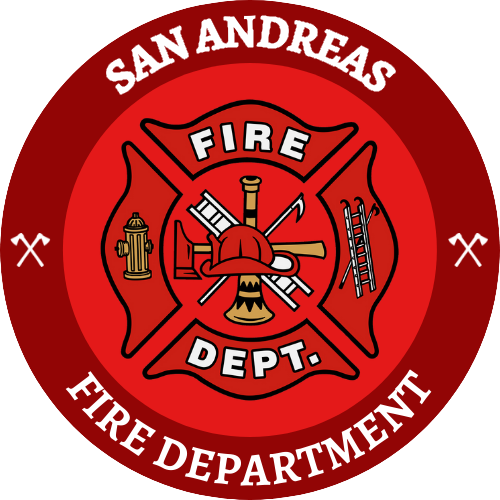Roleplay Guide
Posted: Wed Feb 21, 2024 7:36 am

SAN ANDREAS FIRE DEPARTMENT
RoleplayGuide
This roleplay guide will help you know or have an idea of what your are going to do in the field. This job requires no callsign as it is to help detectives, families or individuals investigate the death of the victim.
Firstly,When arriving on scene of where you are called to pick a body for investigation, you should roleplay stepping put of the car,walking to the trunk and bringing out a bodybag and camera.roleplay visually inspecting the the body for external injuries. Bring out a diagnosis book from the vehicle and write down your findings/document. And then /do the specifications of what you are writing. /do *writes black male, 5 foot 2. e.t.c.
After, you should bring out your camera taking photos of the body and you should actually take photos. Because after autopsy, you should send it to [Coming soon] .bag the body and now store it in the trunk.
Next step is after arriving at the destination. Bringing it to the room where the body will be examined. This is when medium or heavy roleplay will begin.
You have to unbag the body, unclothing the deceased. Make sure to inspect the clothing.
Note: teamwork should be
done here. The role of a morgue attendant is to relieve deceased bodies,store,take then to operation rooms and postions, make sure the equipments are ready. Forensic pathologists does most of the work but with the aid of assistants.
Meanwhile, a toxicologist is a person who handles toxic substances and in autopsy, his main goal is to extract blood,urine fluid from eye and tissues to know wether drugs,alcohol or other toxic substances can be the cause of death.
Below are some roleplay guides in the process of autopsy. Not only forensic pathologists should know this.
for incision
/me Command:
- /me dons a pair of latex gloves and retrieves a sharp scalpel from the sterile tray.
/do Command:
- /do The room is cold, and the fluorescent lights cast a stark glare on the stainless steel autopsy table.
- /do The body lies still, awaiting examination, with a toe tag indicating the deceased's identification.
- /do A faint smell of embalming fluid lingers in the air, mixing with the antiseptic scent of the room.
- /do Instruments such as scissors, forceps, and specimen jars are neatly arranged nearby.
Then, you can continue with the incision:
/me Command:
- /me takes a deep breath, steadying their hand, and begins a precise incision along the midline of the body, from the shoulders to the pubic area, exposing the chest and abdominal cavities.
for organ inspection
/me Command:
- /me carefully examines the exposed organs, starting with the heart, checking for any abnormalities or signs of disease.
/do Command:
- /do The heart appears enlarged, with visible coronary artery blockages, suggesting cardiovascular issues.
- /do Nearby, the lungs are pale and congested, indicating possible respiratory problems.
- /do Moving to the abdominal cavity, the liver and kidneys are examined for size, color, and texture.
- /do The liver shows signs of cirrhosis, likely due to long-term alcohol abuse.
- /do Kidneys exhibit multiple cysts, suggesting a history of kidney disease.
for sampling
/me Command:
- /me reaches for a sterile specimen container and a pair of forceps, preparing to collect a tissue sample from the heart.
/do Command:
- /do The specimen container is labeled with the deceased's information and the date of the autopsy for proper documentation.
- /do Using the forceps, a small tissue sample is carefully extracted from the heart muscle, ensuring minimal damage to the surrounding tissue.
- /do The sample is placed into the specimen container, which is tightly sealed to prevent contamination.
- /do The container is then placed in a refrigerated storage unit, preserving the sample for further analysis or testing.
for body cavity examination
/me Command:
- /me carefully extends the incision along the chest and abdominal cavities, exposing the internal organs.
/do Command:
- /do As the incision deepens, the ribcage is revealed, and the sternum is gently pried open to gain access to the thoracic cavity.
- /do Inside the thoracic cavity, the lungs and heart are examined closely for any signs of trauma or disease.
- /do Moving on to the abdominal cavity, the organs such as the liver, spleen, stomach, and intestines are inspected for abnormalities.
- /do The abdominal organs are examined for size, shape, color, and any signs of pathology.
- /do The process is conducted meticulously, adhering to proper autopsy procedures and guidelines.
For collected tissue examination
/me Command:
- /me carefully places the collected tissue sample under a microscope.
/do Command:
- /do You observe the tissue under the microscope, adjusting the focus for a clear view.
- /do The tissue appears to be well-preserved, showing no signs of deterioration.
- /do You notice the tissue taking on a distinct color, enhancing visibility under the microscope.
- /do The tissue measures approximately [measurement], displaying [color] coloration and [any notable features].
- /do As you cut into the tissue, it reveals its internal structure, allowing for further analysis.
- /do A small piece of tissue is now set aside for in-depth analysis, preserving the main specimen.
- /do The microscope is now ready for a more detailed investigation of the tissue.